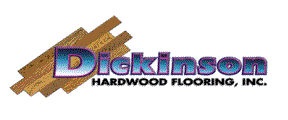How to protect your Hardwood Floors
Protecting your wood floors is essential in making sure they maintain that professional quality look. Listed below are steps you can take in ensuring your floors remain in the best condition possible once installed.
-
If continued construction is being done at your house or jobsite, it is recommended that you cover your floors with construction-grade craft paper once they have been installed. Be sure to thoroughly clean your floors prior to putting down the craft paper to prevent scratches and damages from dust and debris to the finish.
-
Please note that Red Rosin craft paper is not recommended for the protection of natural or white wash finishes due to the possibility of the paper "staining" the floor.
-
If you expect there will be heavier than normal traffic in your household we suggest you use Ram Board's Temporary Floor Protection along with craft paper.
-
Put down the Red Rosin paper as normal and place Ram Board's Temporary Floor Protection directly on top of the craft paper.
-
-
-
IMPORTANT: It is recommended that you DO NOT put tape directly onto your wood floor. However if that is not possible, we urge our customers to only use 3M's Scotch-Blue #2080 Safe-Release Delicate Surfaces Painters Masking Tape to ensure that the finish is not affected.
-
Protecting Hardwood Floors from Chairs and Furniture.
-
A popular form of chair leg protection is the chair glide or furniture pad. There are different types of chair glides, each offering different levels of cost and protection.
-
Tap-on/nail-on pads. These types of pads are very secure since they are attached to the furniture leg with either a small nail or screw. Tap-on pads use different materials to make contact with your floor, depending on your floor type. Care should be used with tap-on pads because if they are not properly installed, the nail or screw may be exposed to harm your floor.
-
Self-adhesive pads. These are peel and stick pads that can be found almost everywhere. They are typically made of felt or rubber and are the least expensive. However, the adhesive on these pads won’t last as long as tap-on or slip-on pads.
-
Slip-on pads. These pads are made to fit over a chair leg and are often made of rubber or soft plastic. These won’t have a problem of falling off like a self-adhesive pad or have the potential to scratch your floor like a broken tap-on pad.
-
-

